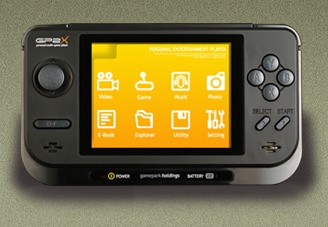Wireless LED on Notebooks
December 30, 2007 Reading time: 2 minutes See Comments

Having just installed Mandriva Powerpack 2008 (and it is very good by the way, you can buy it at http://www.divtech.com.au), I found that all the hardware of my notebook was automatically identified and worked perfectly. With the exception of the wireless LED. I have the Intel Centrino using the ipw2200 driver, the wireless works perfectly but the LED according to the documentation is an experimental option.
In order to activate it I only had to add the line “options ipw2200 led=1″ to the /etc/modprobe.conf file. I used “vi” in order to do this (you need to have root privileges). Alternatively if you want a graphical way to do it go into “Configure your Computer”, its on the quick launch bar in Mandriva 2008, select “Hardware”, the “Browse and Configure Hardware”, the hardware list will then be compiled and displayed.
In the list you should find a category called “Ethernet Card” and as a sub-category to that you will see your wireless card listed (something like “PRO/Wireless 2915ABG” or similar). Select the card and in the right hand windows click on “Set current driver options”. The windows that comes up will show all the parameters to the ipw2200 driver, scroll down to find the “led” parameter and enter “1″ into the textbox. Click “OK” to save. You can then exit the control centre. You will probably need to reboot to activate the LED function. Even though the LED option is experimental it seems to work fine for me.
I would appreciate your feedback if you have comments, corrections or additions to this article, Thanks.
See Comments
Setting up Notebook Hotkeys
July 27, 2007 Reading time: 2 minutes See Comments

I recently set up the hotkeys on my notebook in Mandriva 2007 running KDE. It is fairly simple to do and consists of one script file and then appropriate entries in “Keyboard Shortcuts”.
I created the following file called “command-shortcuts” and placed it in the “bin” directory in my home directory. Make sure to make it executable using “chmod +x command-shortcuts”.
#!/bin/sh
xmodmap -e “keycode 176 = F20″ # Volume up
xmodmap -e “keycode 174 = F21″ # Volume down
xmodmap -e “keycode 160 = F22″ # Mute volume
xmodmap -e “keycode 178 = F23″ # Mail hotkey
xmodmap -e “keycode 236 = F24″ # Web hotkey
xmodmap -e “keycode 162 = F25″ # Play / Pause
xmodmap -e “keycode 164 = F26″ # Stop
xmodmap -e “keycode 144 = F27″ # Previous Track
xmodmap -e “keycode 153 = F28″ # Next Track
xmodmap -e “keycode 115 = F29″ # Win
xmodmap -e “keycode 117 = F30″ # Menu
xmodmap -e “keycode 223 = F31″ # SleepThe keycodes should work for many notebooks. To check they are right for your notebook you can run the ‘xev’ command in a console. The keycode will be displayed for each key you press.
So that the keycodes get loaded at each login, add “/home/{username}/bin/command-shortcuts” to the end of your “.bashrc” file. Replace {username} with your login name.
Now launch “Keyboard Shortcuts” from the “System”, “Conifguration”, “KDE”, “Regional & Accessibility” Menu. Here using the “Command Shortcuts” tab you can assign the “Mail” and “Web” Keys. Using the “Shortcut Schemes” you can assign the the “Win”, “Menu” & “Sleep” Keys. I set the “Win” key to switch to the next desktop, the “Menu” key brings up the KDE Menu and the “Sleep” key issue the logout command.
Finally you can set up the Volume Down, Up and Mute by right-clicking on the Mixer and selecting “Show Mixer Windows”. Then from the “Settings” menu select “Global Shortcuts” and assign the appropriate keys. You can do the same in Amarok for the “Play/Pause”, “Stop”, “Previous Track”, “Next Track”.
Thanks go to Ubuntu user zba78 who posted info on hotkeys at http://ubuntuforums.org/showthread.php?p=1260079.
I would appreciate your feedback if you have comments, corrections or additions to this article, Thanks.
See Comments
Configuring the GP2X on Mandriva 2007
January 4, 2007 Reading time: 5 minutes See Comments
 My new toy is the GP2X, a linux based handheld multimedia device. It’s an awesome little device. If you want to know more about the features of the GP2X click here.
My new toy is the GP2X, a linux based handheld multimedia device. It’s an awesome little device. If you want to know more about the features of the GP2X click here.
Below I have detailed the steps I made to make life easier when using the GP2X with Mandriva Linux 2007.
The GP2X can act as a standard USB storage device, allowing you to drag and drop files just like you do with a hard disk. This is good but using the USB Network feature of the GP2X is much more useful and once setup a lot easier to use. As an added bonus you can still use the GP2X while it is connected and transferring files.
Before beginning see this article at http://wiki.gp2x.org/articles/u/s/b/UsbNet_on_Linux.html and follow the instructions under “Troubleshooting”. This will make your GP2X compatible with the 2.6 Kernel of Mandriva 2007. (This step may not be necessary, but until I did this the network would lock up).
To setup the GP2X end go into “Setting” from the main menu, then select “System”, make sure “Menu Extension” is on. Scroll down to “USB Network”. Make these settings…
USB Network: Always On
IP: 192.168.0.2
FTP,Telnet Server: Always On
Samba Server: Always OnPress “B” to save the settings, there may be a slight pause while the network starts.
To setup the PC end, first create a file called “gp2x.rules” in /etc/udev/rules.d containing the following lines
# Experimental rules to automatically bring up usb0 when the GP2X is connected.
ATTRS{configuration}==”CDC Ethernet”,ATTRS{product}==”RNDIS/Ethernet Gadget”,RUN+=”/usr/bin/gp2x”
Now create a file in /usr/bin called gp2x and make it executable. (ie chmod +x /usr/bin/gp2x), with these contents:
#!/bin/sh
echo $ACTION-`date` >> /tmp/gp2x-status
if [ "$ACTION" = "add" ]
then
/sbin/ifconfig usb0 192.168.0.1 192.168.0.1
fiNow plug in and switch on your GP2X, if all goes well in a short while you should have a network interface called usb0, check this by issuing a /sbin/ifconfig command. Now to access your GP2X you can run “telnet 192.168.0.2″, login as root, default is no password.
You can also access the GP2X samba share by running konqueror using the address smb://gp2x or open up straight into the sd card using smb://gp2x/gp2x/mnt/sd.
I’ve added two icons to my desktop to make life easier. (Right click on the desktop and select New). The first icon is an “Link to application” called “GP2X Console” which runs “/usr/bin/konsole -T GP2X -e telnet -l root 192.168.0.2″, this automatically opens up a console and logs you in. The other icon is a “Link to URL” which is called “GP2X Network” and has a location of “smb://gp2x/gp2x/mnt/sd”.
Here are the icons I used for the links:
 This one for console. (Thanks to Paul for this icon, see http://dl.openhandhelds.org/cgi-bin/gp2x.cgi?oovxdnowromm,0,0,0,8,1960 )
This one for console. (Thanks to Paul for this icon, see http://dl.openhandhelds.org/cgi-bin/gp2x.cgi?oovxdnowromm,0,0,0,8,1960 )
 and this one for network, which I modified from the above icon.
and this one for network, which I modified from the above icon.
Hope this helps. Now if someone can show me how to automatically display and remove these icons on the desktop when the GP2X is plugged /unplugged that would be great. I would appreciate your feedback if you have comments, corrections or additions to this article, Thanks.